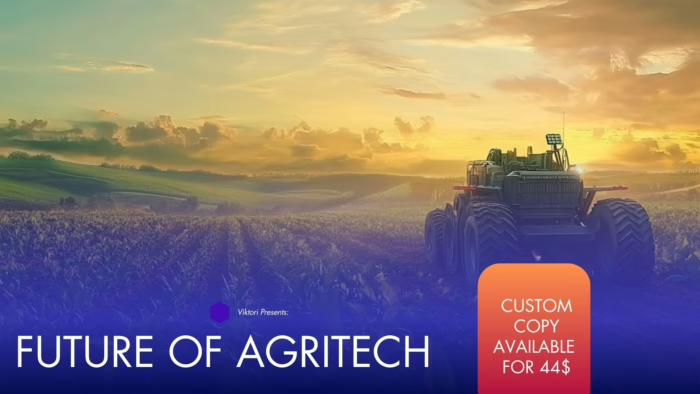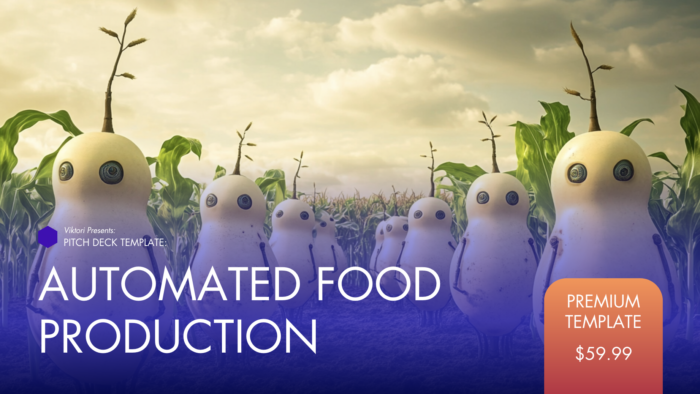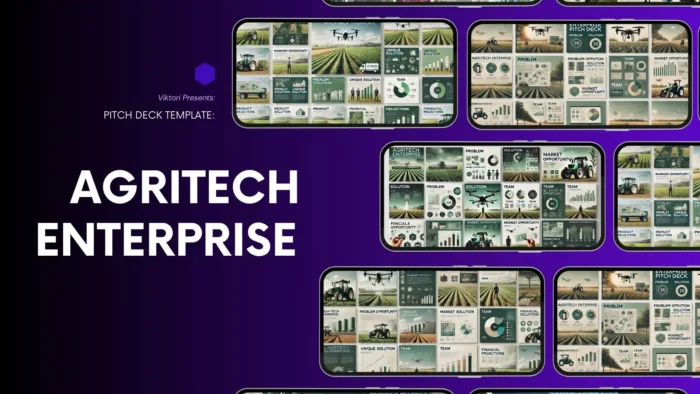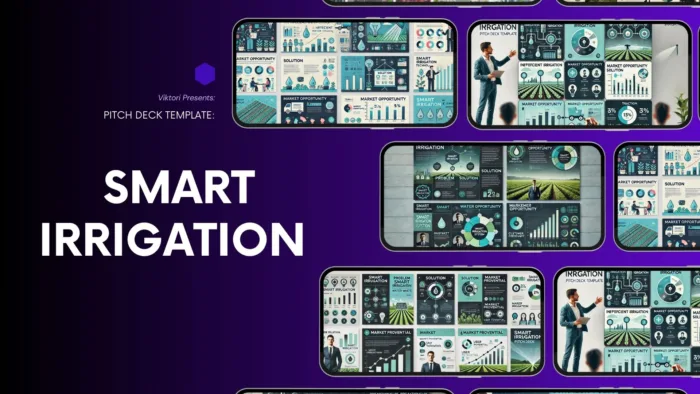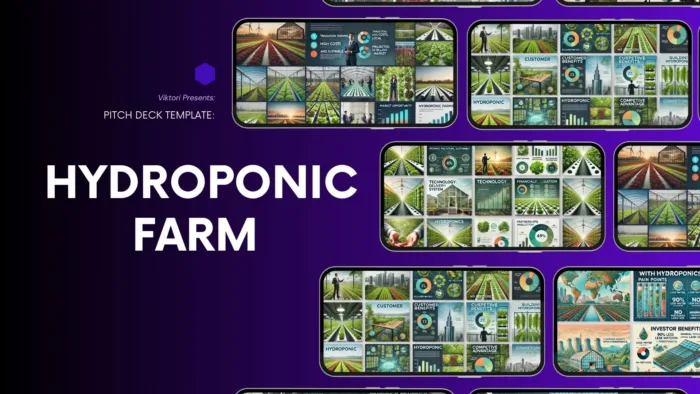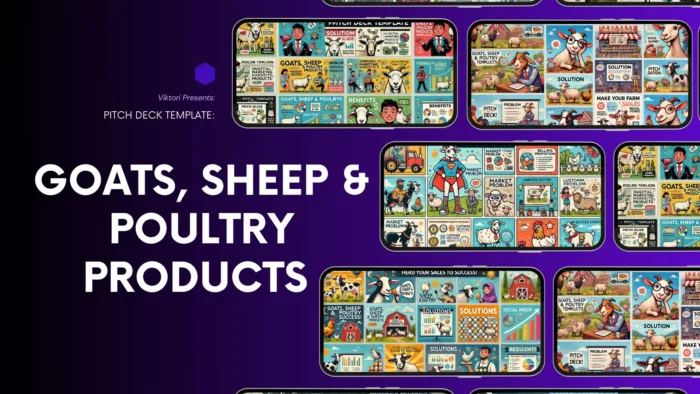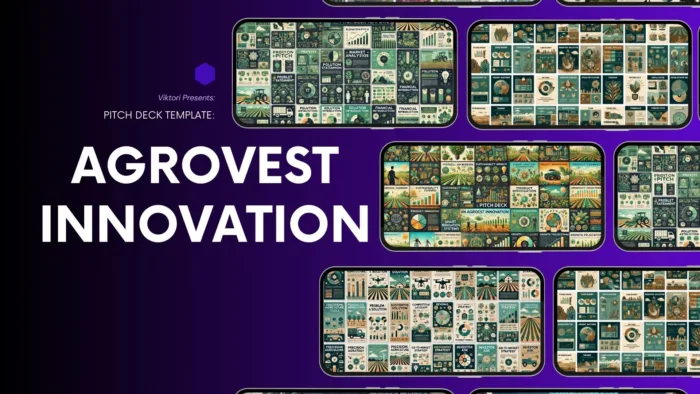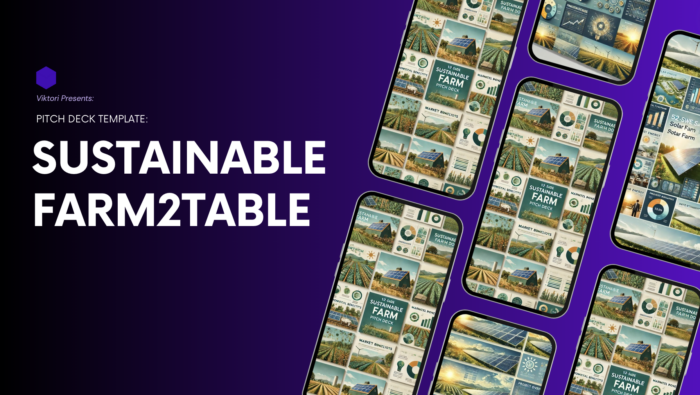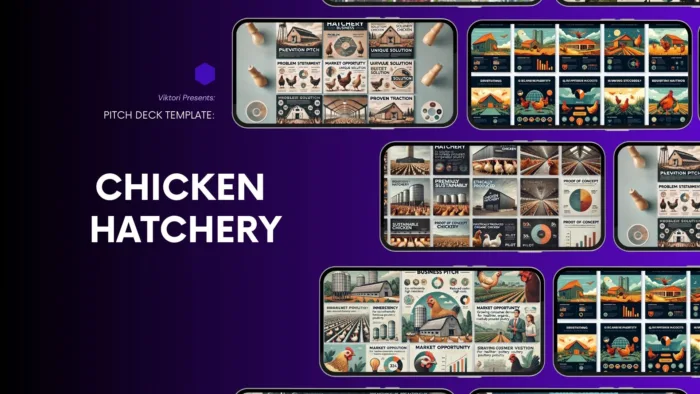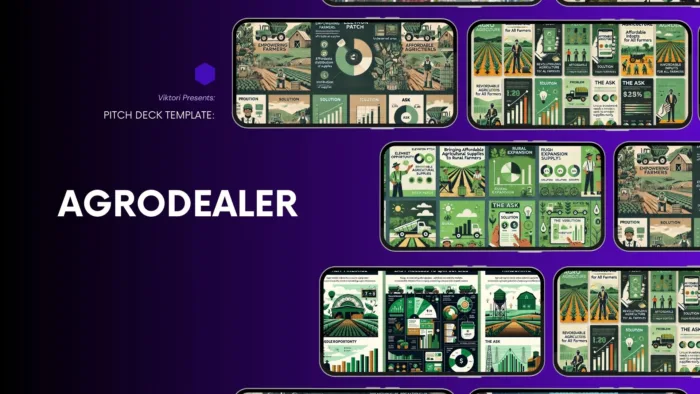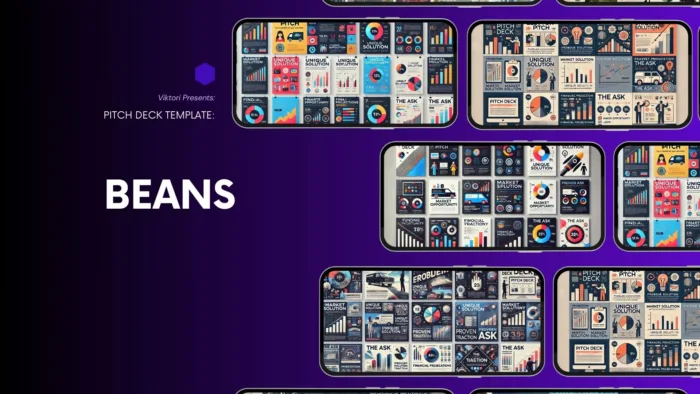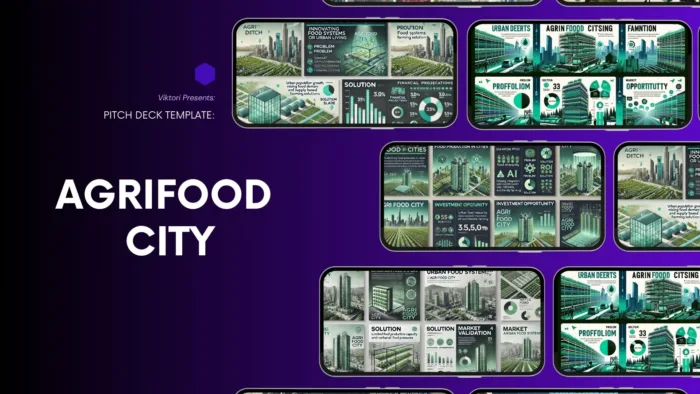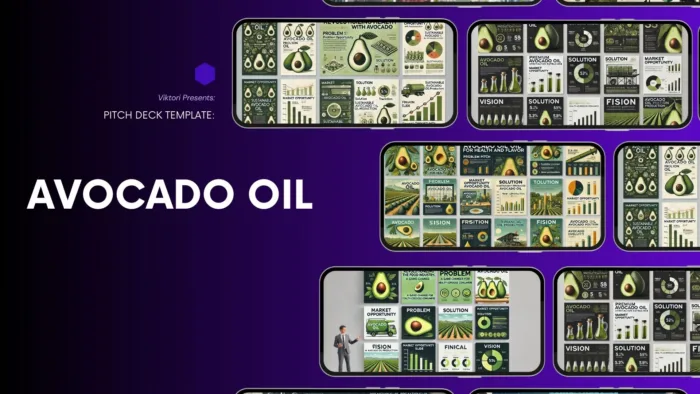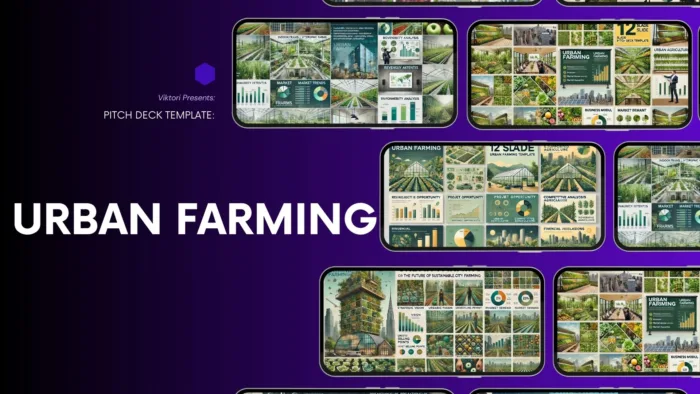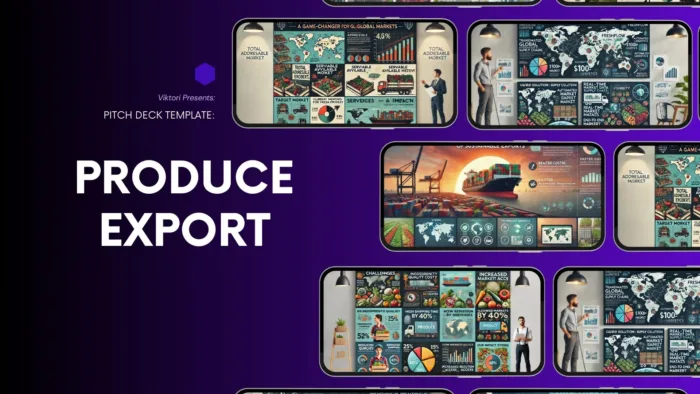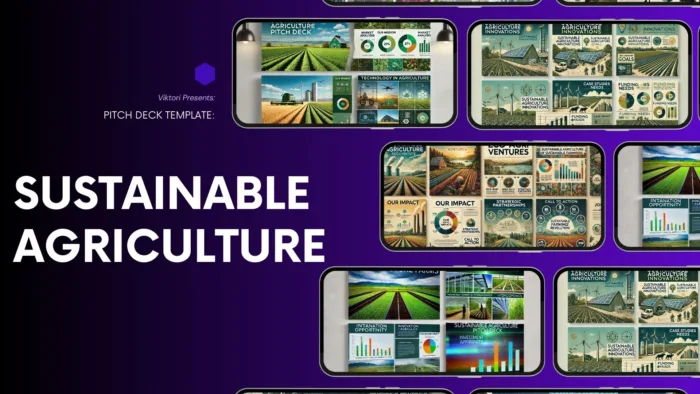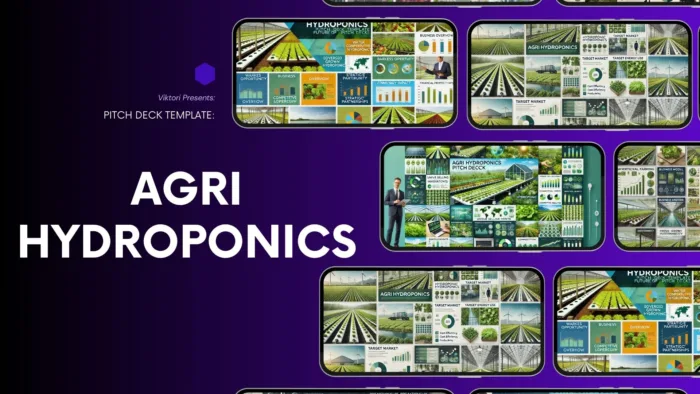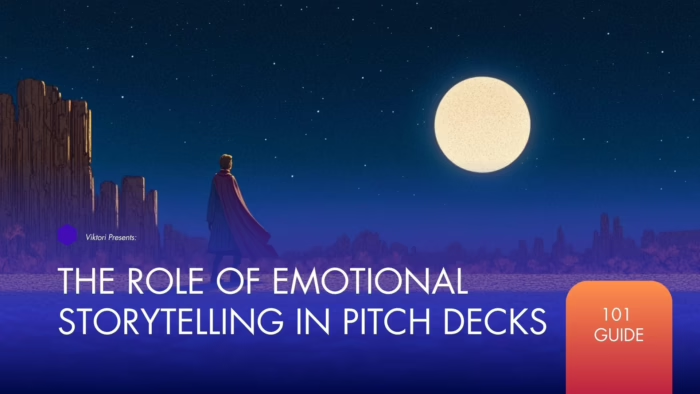Alright, let’s talk IoT. You know that smart devices are everywhere now—your thermostat is talking to your lights, your fridge is checking the weather, and maybe even your toothbrush is judging your dental hygiene habits.
But here’s the thing: while IoT sounds cool and futuristic, most pitches for IoT solutions end up sounding like someone trying to explain quantum physics in a noisy bar. Boring. Confusing. And a total disconnect.
I’m Viktor, a pitch deck expert and creative business strategist. Over the past 13 years, I’ve helped businesses secure millions of $ in funding thanks to my approach and I’m sharing it here in this pitch deck guide.
This guide is your no-nonsense approach to crafting an IoT pitch that actually gets attention (and funding). Forget the fluff, let’s focus on clarity, impact, and, most importantly, getting that deal.
Ready? Let’s dive in.
Get My 12 Slide Framework That Got $500mil in Funding For Clients.
What do you think of having 12 dead simple formulas, that will help you craft 12 slides, in about 1 hour? That’s what you’ll get, when you download my 12 slide framework. Save hours crafting your pitch deck copy with my tested approach that includes:
- Elevator pitch one sentence formula
- Problem/ solution slide one sentence formula
- Competitor slide one sentence formula
- 9 other formulas, tips, tricks and advice
The formulas worked for 40+ industries and 500+ companies. Including the one you’re looking at now.
Clicking the link won’t charge you anything.
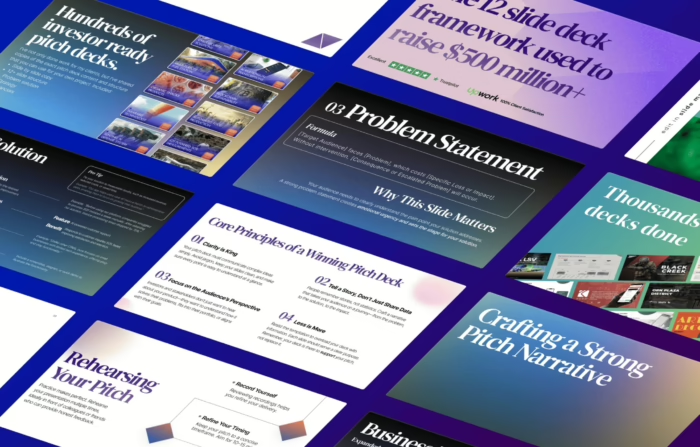
Get an investor ready pitch deck that gets you funded and saves over 30 hours of your time.
Join 100s of successful entrepreneurs who’ve transformed their pitch decks by using my hands-off approach, which includes: market research, copy, design, financials, narrative and strategy.
1 week turnaround time and less. Special pricing for early stage companies.
The least you will get on this call is 10 actionable tips & strategies to own that next pitch, worth $599, for free.

15 Slide Agritech IoT pitch deck Template | Google Slides
The above is is just a simplified pitch deck version developed as part of our entrepreneurship program for graduate studies.
Founders that are serious about getting the funding they need, opt in for a deck has industry specific content, superb narrative and award winning design like these ones below:









I can help you build that deck with my hands-off process in 7 days or less.
Book a free 30 minute call below if you’re serious about getting an investor ready deck, and we’ll discuss your needs in detail. I’ll help you design the deck, write the content, develop the narrative and flesh out the strategy with financials.

We help 15,000+ founders every month create better pitch decks.
Alternatively, get the custom template for just $69,99.As soon as the payment is processed I’ll send over a quick questionnaire and deliver the deck in 24 hours and less.

Follow us on social for the newest templates:
1. Title Slide
Objective: Introduce your company and provide essential information upfront.
- Company Name: Clearly display your company’s name.
- Tagline: A short, memorable phrase that encapsulates your business’s core value proposition.
- Your Name and Title: Include your full name and role within the company.
- Contact Information: Provide your email address, phone number, and company website.
- Date: The date of the presentation to give context and relevance.
2. Problem Statement
Objective: Clearly define the problem your IoT solution addresses.
- Headline: “The Challenge in Modern Agriculture”
- Problem Description: Detail the specific issue in a concise manner.
- “Farmers face significant challenges in monitoring soil health and crop conditions, leading to inefficient resource use and lower yields.”
- Supporting Data: Use statistics and real-world examples to underscore the problem’s severity.
- “According to the UN, global crop yields could decrease by up to 30% by 2050 due to climate change and resource inefficiency.”
- Pain Points: Highlight the main pain points experienced by your target market.
- “Excessive water usage, undetected crop diseases, and inconsistent soil nutrients are major concerns for farmers.”
3. Solution
Objective: Introduce your IoT solution and explain how it addresses the identified problem.
- Headline: “Introducing AgriSense”
- Solution Overview: Describe your product and its core functionality.
- “AgriSense is an IoT-powered solution that provides real-time monitoring and data analytics for soil health and crop conditions.”
- Unique Selling Proposition (USP): What makes your solution unique or superior?
- “Combines advanced sensor technology with AI-driven insights for precise resource management.”
- Key Features and Benefits:
- “Soil Moisture Sensors: Ensure optimal watering schedules.”
- “Nutrient Monitoring: Detect nutrient deficiencies early.”
- “AI Analytics: Predict crop diseases before they spread.”
- Visuals: Include images or diagrams of your product to help illustrate its functionality.
4. Market Opportunity
Objective: Demonstrate the market potential and growth prospects for your IoT solution.
- Headline: “The Growing Market for Smart Agriculture”
- Market Size: Provide data on the total addressable market (TAM), serviceable available market (SAM), and serviceable obtainable market (SOM).
- “The global smart agriculture market is projected to reach $22 billion by 2025.”
- Market Growth: Include trends and forecasts that show market growth potential.
- “Annual growth rate of 15% driven by the need for sustainable farming practices.”
- Target Audience: Define your primary and secondary target audiences.
- “Primary: Large-scale commercial farms. Secondary: Small to medium-sized farms adopting precision agriculture.”
- Visuals: Use charts or graphs to visually represent market data and trends.
By fleshing out these first four slides with detailed and specific information, you set a strong foundation for your pitch, clearly communicating the problem, your innovative solution, and the market potential to investors.
5. Product Overview
Objective: Provide a detailed explanation of your IoT product, including its technology and components.
- Headline: “AgriSense: Cutting-Edge IoT Technology for Agriculture”
- Technical Details: Describe the technology stack and architecture.
- “Utilizes advanced sensors, AI algorithms, and cloud-based analytics.”
- Product Components: Break down the hardware, software, and services involved.
- “Soil Moisture Sensors, Nutrient Sensors, AI Analytics Platform, Mobile App for Real-Time Data Access.”
- Demo or Prototype: Provide a visual demo or prototype of your product.
- “Live demonstration of sensor installation and data monitoring through the app.”
- Visuals: Include diagrams, screenshots, or photos of the product components and the user interface.
6. Business Model
Objective: Explain how your IoT solution generates revenue and your pricing strategy.
- Headline: “AgriSense Business Model”
- Revenue Streams: Explain how you plan to generate revenue.
- “Subscription-based model for access to the analytics platform and hardware sales of sensors.”
- Pricing Strategy: Detail your pricing model and why it’s competitive.
- “Tiered subscription plans based on farm size and features required. One-time hardware purchase.”
- Sales and Distribution Channels: Describe how you will sell and distribute your product.
- “Direct sales to large-scale farms, partnerships with agricultural cooperatives, and online sales for smaller farms.”
- Visuals: Include diagrams or charts to illustrate the business model and revenue streams.
Hold on. You might want to check my list on the best presentation and communication books...
These are crucial books that will help you improve the design and structure of your decks and presentations, besides improving your delivery and skyrocketing your confidence when facing investors. Check them out below.

7. Traction and Validation
Objective: Showcase any early success and validation to build credibility and investor confidence.
- Headline: “Traction and Market Validation”
- Milestones Achieved: Highlight key milestones such as product development, pilot projects, or partnerships.
- “Completed pilot projects with 50 farms, resulting in a 20% increase in crop yield and a 30% reduction in water usage.”
- Customer Testimonials: Include quotes or stories from satisfied users.
- “Farmers reported significant improvements in efficiency and crop health.”
- Key Metrics: Show relevant metrics such as user growth, revenue, or market penetration.
- “Achieved 500 active users within the first six months.”
- Visuals: Use graphs, charts, and testimonials to support your claims.
8. Go-to-Market Strategy
Objective: Describe your plan for acquiring customers and scaling the business.
- Headline: “AgriSense Go-to-Market Strategy”
- Marketing Plan: Outline your marketing strategies and tactics.
- “Targeted online advertising, presence at agricultural trade shows, and content marketing through farming blogs and forums.”
- Sales Strategy: Describe your sales approach and processes.
- “Direct sales team targeting large farms, online sales platform for smaller farms, and reseller partnerships.”
- Partnerships: Mention any strategic partnerships that will help you scale.
- “Partnerships with agricultural cooperatives, government programs, and academic institutions for research and development.”
- Visuals: Use flowcharts or timelines to illustrate your go-to-market plan.
By detailing these slides, you provide a comprehensive view of your product, business model, early successes, and strategies for market entry, which collectively build a strong case for investors.
9. Competitive Analysis
Objective: Highlight your competitive landscape and demonstrate how your IoT solution stands out.
- Headline: “Competitive Analysis”
- Competitors: Identify your main competitors and their products.
- “Competitors include FarmX, CropMetrics, and SmartFarm Technologies.”
- Competitive Matrix: Create a matrix to compare your solution with competitors on key features.
- “Compare on factors such as sensor accuracy, AI analytics, user interface, and price.”
- Differentiation: Explain how your product is different and superior.
- “AgriSense offers more precise sensors, advanced AI-driven insights, and a more intuitive user interface at a competitive price point.”
- Visuals: Use a table or chart to visually represent your competitive analysis.
10. Financial Projections
Objective: Provide realistic financial forecasts to demonstrate potential profitability and growth.
- Headline: “Financial Projections”
- Revenue Forecast: Provide a 3-5 year revenue projection.
- “Projected revenue of $5 million by year three.”
- Expense Forecast: Detail projected expenses, including R&D, marketing, and operations.
- “Expenses include $1 million for R&D, $500k for marketing, and $300k for operations annually.”
- Key Financial Metrics: Highlight important metrics such as gross margin, EBITDA, and break-even analysis.
- “Expected gross margin of 60%, EBITDA of $1 million by year three, and break-even within two years.”
- Visuals: Use graphs and charts to illustrate financial projections and key metrics.
11. Team Expertise
Objective: Highlight the skills and experience of your team to build credibility and investor confidence.
- Headline: “Our Team”
- Team Members: Introduce key team members, their roles, and relevant experience.
- “Jane Doe, CEO: 10+ years in IoT and agriculture tech. John Smith, CTO: Expert in AI and sensor technology with 15 years of experience.”
- Advisors: Mention any advisors or mentors who support your project.
- “Advisors include Dr. Sarah Brown, a leading expert in agricultural sciences, and Mike Johnson, former VP at a major agritech company.”
- Team Strengths: Highlight the unique strengths and skills of your team.
- “Our team combines deep industry knowledge, technical expertise, and a strong track record of successful product launches.”
- Visuals: Use professional photos and brief bios of each team member.
12. Regulatory and Security Concerns
Objective: Address how your IoT solution complies with regulations and ensures data security.
- Headline: “Regulatory Compliance and Data Security”
- Regulatory Compliance: Discuss the regulations relevant to your product and how you comply with them.
- “Our solution complies with agricultural regulations and industry standards, including ISO 27001 for information security.”
- Data Security: Explain the measures taken to ensure data security and user privacy.
- “We use end-to-end encryption, secure cloud storage, and regular security audits to protect user data.”
- Risk Mitigation: Highlight any risk mitigation strategies related to compliance and security.
- “We conduct regular compliance reviews and have a dedicated team to address security vulnerabilities promptly.”
- Visuals: Use icons or diagrams to illustrate compliance and security measures.
By detailing these slides, you continue to build a comprehensive and compelling narrative around your IoT solution, emphasizing your competitive advantages, financial viability, team strength, and adherence to regulatory and security standards.
13. Funding Ask
Objective: Clearly state how much funding you are seeking and how you plan to use the funds.
- Headline: “Our Funding Ask”
- Amount Requested: State the specific amount of funding you are seeking.
- “We are seeking $2 million in funding.”
- Use of Funds: Break down how the funds will be used.
- “The funds will be allocated as follows: $1 million for R&D, $500k for marketing and customer acquisition, $300k for operations, and $200k for team expansion.”
- Milestones: Link the funding to specific milestones you plan to achieve.
- “Achieving these milestones will include completing the next product iteration, expanding our customer base to 1,000 farms, and launching in three new markets.”
- Visuals: Use a pie chart or bar graph to visually represent the allocation of funds.
14. Closing Slide
Objective: Summarize the key points and leave a lasting impression with a strong call to action.
- Headline: “Join Us in Revolutionizing Agriculture”
- Summary of Key Points: Briefly recap the main points of your pitch.
- “AgriSense offers a groundbreaking IoT solution for agriculture, addressing critical challenges with advanced technology and a strong market opportunity.”
- Call to Action: Encourage investors to take the next step.
- “We invite you to join us on this journey to revolutionize agriculture. Let’s work together to make a significant impact.”
- Contact Information: Ensure your contact details are prominently displayed for follow-up.
- “Contact: Jane Doe, CEO | jane.doe@smartagritech.com | (123) 456-7890 | www.smartagritech.com“
- Thank You Message: Express gratitude for their time and consideration.
- “Thank you for your time and consideration. We look forward to the opportunity to work with you.”
15. Q&A Slide
Objective: Facilitate a smooth transition to the Q&A session and prepare to address potential questions.
- Headline: “Questions & Answers”
- Invite Questions: Encourage the audience to ask questions.
- “We’re happy to answer any questions you may have.”
- Backup Slides Prepared: Have additional detailed slides ready to address specific questions related to technology, market research, financials, etc.
- Visuals: Use a simple and clean layout with a welcoming tone.
- “Feel free to ask about any aspect of our solution, market strategy, financial projections, or team.”
By detailing these slides, you provide a comprehensive conclusion to your pitch deck, clearly outlining your funding needs, summarizing the key points, inviting further engagement, and being prepared to address any questions from the investors.
Last Words
Boom. You’ve got the blueprint for pitching your IoT solution without putting your audience to sleep. Look, IoT isn’t just about adding “smart” to every appliance you can think of. It’s about solving real-world problems in a way that makes life easier, safer, or just plain cooler. And now, you’ve got the tools to sell that vision.
But remember, no one invests just because your tech is smart—they invest because your pitch was smarter. You’ve laid out the pain, you’ve agitated it, you’ve shown why your solution is the missing piece of the puzzle, and you’ve done it in a way that’s clear and engaging.
So go out there, own the room, and close that deal. Because if you don’t, someone else will.
Now get pitching!
You got this!
But if you don’t got it:
Join hundreds of successful entrepreneurs who’ve transformed their pitch decks with my help.
Let me develop an investor ready deck by using my hands-off approach, which includes: market research, copy, design, financials, narrative and strategy.
One week turnaround time.
The least you will get is 10 actionable tips & strategies to own that next presentation, worth $599, for free.

Related Agritech Pitch Deck Templates
The 12 Slide Agritech Pitch Deck Template
The 12 Slide Vermicomposting Pitch Deck Template
Get Seed Money With This Food Production Pitch Deck Template | Google Slides
Alright, let’s be real. You’ve probably heard it a hundred times: the world needs more…
7 Slide Agritech Enterprise Pitch Deck Template
So, you’ve come up with an idea to change the world of agriculture. You’ve got…
14 Slide Smart Irrigation Pitch Deck Template
You’re probably wondering why on Earth irrigation needs to be smart, right? Well, let me…
12 Slide Agritech Solutions Pitch Deck Template
So, you’ve come up with a revolutionary idea to transform agriculture, and it’s got the…
12 Slide Farm IoT Pitch Deck Template
You’ve got a farm. Or maybe you’re into tech. Either way, you’re probably staring at…
10 Slide Hydroponic Farm Pitch Deck Template: For When You Want to Grow Lettuce, Not Boring Investors
Ever felt the frustration of spending way too much on groceries only to find that…
10 Slide Goats, Sheep & Poultry Products Pitch Deck Template
Alright, picture this: you’re a small-scale farmer, juggling goats, sheep, and a flock of hens,…
17 Slide Agrivest Innovation Pitch Deck Template
So, you’ve got a killer idea to turn piles of farm waste into cold, hard…
12-Slide Sustainable Farm Pitch Deck Template
You’ve got a vision for a sustainable farm that’s going to put “Farm to Table”…
13 Slide Chicken Hatchery Pitch Deck Template
In the competitive landscape of poultry farming, seizing every advantage is crucial for success. For…
12 Slide Agro Dealer Pitch Deck Template
Hey there, future agricultural innovator! So, you’ve got this brilliant vision to revolutionize the agrodealer…
12 Slide Beans Pitch Deck Template
Hey there, fellow bean aficionado! So, you’ve got this burning idea, right? You’re ready to…
12 Slide Agrifood City Pitch Deck Template
Ever wondered why some urban farms flourish like a well-tended garden while others wither in…
12 Slide Avocado Oil Production Pitch Deck Template
So, you’ve got this idea buzzing in your head—a vision of revolutionizing kitchens worldwide with…
12 Slide Urban Farming Pitch Deck Template
So, you’ve got this genius idea to turn that cramped patio of yours into a…
15 Slide Produce Export Pitch Deck Template
So, you’ve got a bumper crop of the finest fruits and veggies from the lush…
12 Slide Sustainable Agriculture Pitch Deck Template
Picture this: you’ve got a groundbreaking agri-tech idea that could potentially change the farming game,…
14 Slide Agri Hydroponics Pitch Deck Template
You have an innovative idea to revolutionize agriculture with hydroponics, but you’re struggling to get…
Looking for a step by step guide to build a pitch deck?
Check out our in-depth agritech pitch deck guide.
Check out some of the essential 101 guides:
The Dreaded Financial Projections Slide in a Pitch Deck: What’s The Secret?
This is the ideal pitch deck length + exact slides Author: ViktorPitch Deck Expert. Ex…
The Role of Emotional Storytelling in Pitch Decks
Why Color Psychology in Pitch Decks Matters More Than You Think
This is the ideal pitch deck length + exact slides Author: ViktorPitch Deck Expert. Ex…
How to Design a Visually Stunning Investor Pitch Deck + Template
This is the ideal pitch deck length + exact slides
This is the ideal pitch deck length + exact slides Author: ViktorPitch Deck Expert. Ex…
Mastering the Financial Projections Slide: Turning First Impressions into Lasting Opportunities
You’re convinced your startup is the next big thing, but somehow, your pitch keeps landing…

